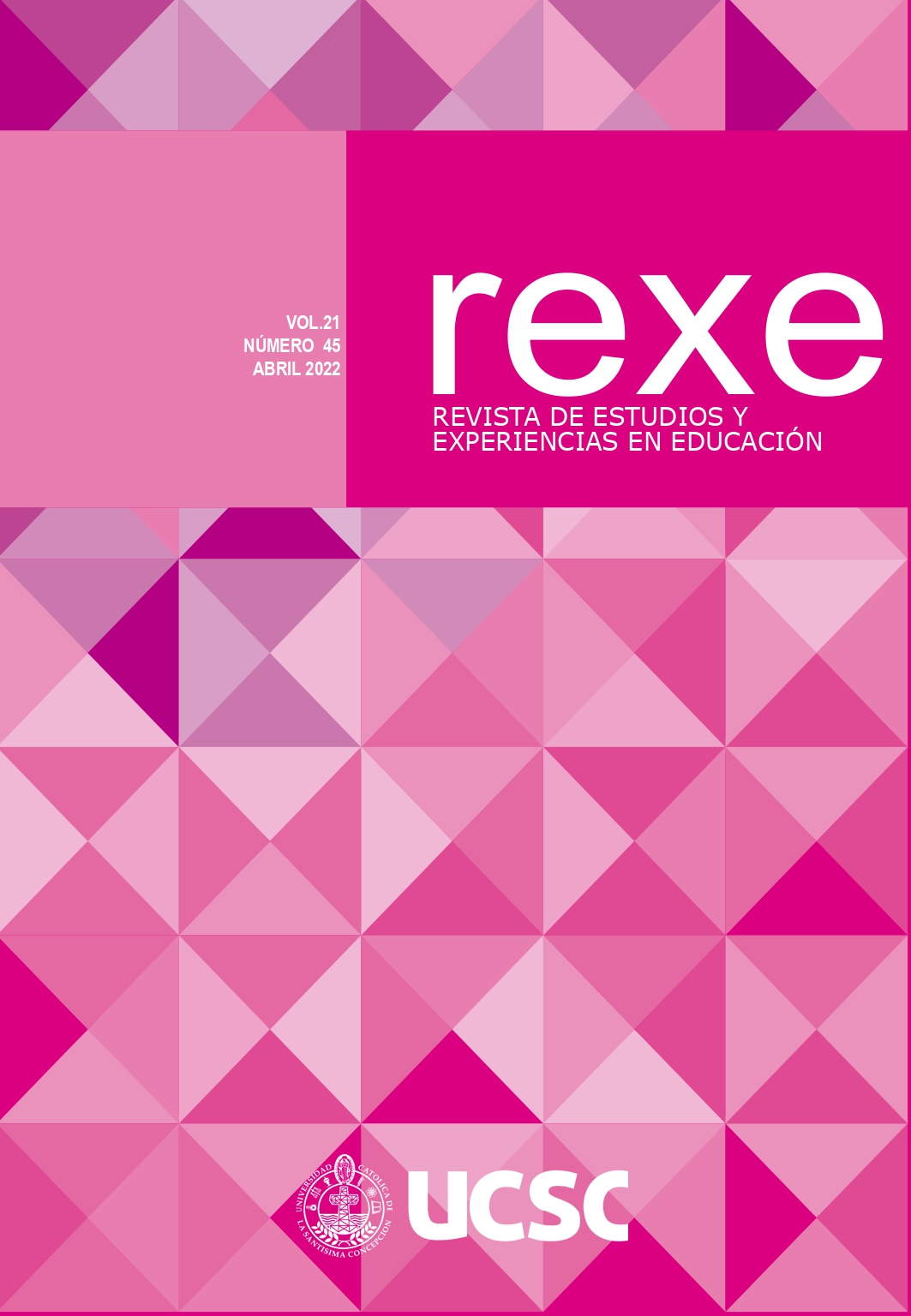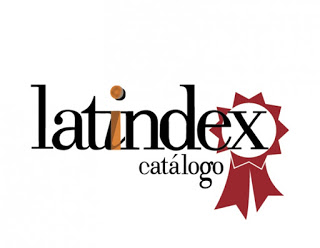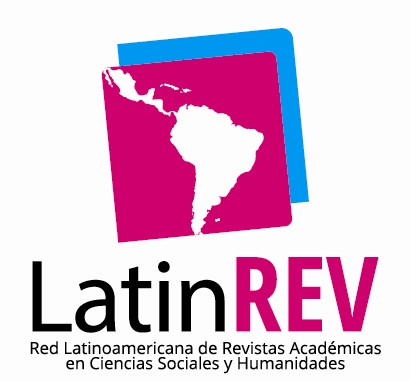Non-cost proposal to reduce educational-technological inequity during confinement in Chile
DOI:
https://doi.org/10.21703/0718-5162.v21.n45.2022.004Resumo
Introduction: In Chile, Social inequity becomes a critical factor that prevents the successful implementation of an online curriculum due to the unbalanced distribution of technological resources. During Covid-19 confinement, even there is a multichannel approach from the Ministry of Education to provide educational material to families, e-learning stands as the only available option for formal instruction. Objective: This study aimed to reduce educational-technological inequity during confinement 2020 in Chile through a non-cost feasible proposal. Material and Methods: The study was applied research under a mixed approach paradigm. To get to the main objective, two specific objectives were set: (1) To determine the contextual challenges related to technology that prevent online implementation of courses in Chile (2) To determine popular technological resources in Chile that can be used for educational purposes. To accomplish this investigation's objectives, a checklist based on Aldowah's questioner and an analytic matrix were used. Conclusions: A feasible contribution to educational-technological equity during confinement 2020 in Chile is to use Facebook® for collaborative learning, lectures, oral presentations, reading comprehension, written production, discussion, creative learning, and feedback, since it can support all these types of activities, in a free-internet-access mode, supported for multi-device, which increases the opportunities of participation of all Chilean students in online classes.
Downloads
Referências
Aldowah, H., Al-Samarraie, H., & Ghazal, S. (2019). How Course, Contextual, and Technological Challenges are Associated with Instructors’ Individual Challenges to Successfully Implement E-Learning: A Developing Country Perspective. IEEE Access, 7, 48792–48806. https://doi.org/10.1109/ACCESS.2019.2910148
Balboni, M., Rovira, S., & Vergara, S. (2011). ICT in America: A microdata analysis. https://repositorio.cepal.org/bitstream/handle/11362/35290/S2011015_en.pdf?sequence=1
Baran, E., Correia, A. P., & Thompson, A. D. (2013). Tracing successful online teaching in higher education: Voices of exemplary online teachers. Teachers College Record, 115(3). https://static1.squarespace.com/static/595fb5fdb8a79b4f2b5c6f5c/t/5f258c83401e8d4dfe63d2ce/1596296324332/TracingSuccessfulOnlineTeachinginHigherEducation_VoicesofExemplaryOnlineTeachers.pdf
Bos, N., Groeneveld, C., van Bruggen, J., & Brand-Gruwel, S. (2016). The use of recorded lectures in education and the impact on lecture attendance and exam performance. British Journal of Educational Technology, 47(5), 906–917. https://doi.org/10.1111/bjet.12300
Cabello, P., Claro, M., Rojas, R., & Trucco, D. (2020). Children’s and adolescents’ digital access in Chile: the role of digital access modalities in digital uses and skills. Journal of Children and Media. https://doi.org/10.1080/17482798.2020.1744176
Cambridge Dictionary. (2020). Significado de LECTURE en el Diccionario Cambridge inglés. https://dictionary.cambridge.org/es/diccionario/ingles/lecture
Chan, M. (2020). A multilevel SEM study of classroom talk on cooperative learning and academic achievement: Does cooperative scaffolding matter? International Journal of Educational Research, 101, 101564. https://doi.org/https://doi.org/10.1016/j.ijer.2020.101564
Choe, R. C., Scuric, Z., Eshkol, E., Cruser, S., Arndt, A., Cox, R., Toma, S. P., Shapiro, C., Levis-Fitzgerald, M., Barnes, G., & Crosbie, R. H. (2019). Student satisfaction and learning outcomes in asynchronous online lecture videos. CBE Life Sciences Education, 18(4). https://doi.org/10.1187/cbe.18-08-0171
Claro Chile. (2020). Redes sociales sin descontar saldo. https://www.clarochile.cl/personas/buscador/?q=redes+sociales
Comisión Económica para Latinoamérica y el Caribe. (2020). El desafío social en tiempos del COVID-19. https://www.cepal.org/es/publicaciones/45527-desafio-social-tiempos-covid-19
Crook, C., & Schofield, L. (2017). The video lecture. Internet and Higher Education, 34, 56–64. https://doi.org/10.1016/j.iheduc.2017.05.003
Elmer, T., Mepham, K., & Stadtfeld, C. (2020). Students under lockdown: Comparisons of students’ social networks and mental health before and during the COVID-19 crisis in Switzerland. PLoS ONE, 15(7 July). https://doi.org/10.1371/journal.pone.0236337
English, L. (1999). Constructivism and Education. Educational Studies in Mathematics, 40(1), 93–99. https://doi.org/DOI: 10.2307/3483308
Entel. (2018). Redes sociales liberadas. https://miportal.entel.cl/marketing/redes-sociales
GCF Learn Free. (2020). What is Facebook? https://edu.gcfglobal.org/en/facebook101/what-is-facebook/1/
Google Play. (2020a). Theme Store - Apps en Google Play. https://play.google.com/store/apps/details?id=com.nearme.themespace&hl=es_CL
Google Play. (2020b). vivo.com - Apps en Google Play. https://play.google.com/store/apps/details?id=com.vivo.website&hl=es_CO
Influencer Marketing Hub. (2020). What is TikTok? What you need to know about the new Musical.ly. https://influencermarketinghub.com/what-is-tiktok/
Instituto Nacional de Estadísticas Chile. (2020). Boletín Estadístico: Empleo Trimestral. https://www.ine.cl/estadisticas/sociales/
Jonassen, D. H. (1999). Constructivist Learning Environments on the Web: Engaging Students in Meaningful Learning. THE EDUCATIONAL TECHNOLOGY CONFERENCE AND EXHIBITION, SINGAPORE. http://citeseerx.ist.psu.edu/viewdoc/summary?doi=10.1.1.137.618
Katz, V. S. (2017). What it means to be “under-connected” in lower-income families. Journal of Children and Media, 11(2), 241–244. https://doi.org/10.1080/17482798.2017.1305602
Kendeou, P., Papadopoulos, T. C., & Spanoudis, G. (2015). Reading Comprehension and PASS Theory. In Cognition, Intelligence, and Achievement: A Tribute to J. P. Das (pp. 117–136). Elsevier Inc. https://doi.org/10.1016/B978-0-12-410388-7.00007-5
Lindsay, W., & Mclaren, S. (2000). The Internet: an aid to student research or a source of frustration? Journal of Educational Media, 25(2).
Ministerio de Educación. (2012). Bases Curriculares Educación Básica. Unidad de Curriculum y Evaluación. http://archivos.agenciaeducacion.cl/biblioteca_digital_historica/orientacion/2012/bases_curricularesbasica_2012.pdf
Ministerio de Educación. (2016). Bases Curriculares 7o Básico a 2o Medio. Unidad de Curriculum y Evaluación. https://www.curriculumnacional.cl/614/articles-37136_bases.pdf
Ministerio de Educación. (2020). Bases Curriculares 3o y 4o medio. Unidad de Curriculum y Evaluación. https://www.curriculumnacional.cl/614/articles-133992_recurso_10.pdf
Ley 19876, Pub. L. No. Ley 19876, Biblioteca del Congreso Nacional (2003). http://bcn.cl/2eygb
Ley 20370, Pub. L. No. Ley 20370, Biblioteca del Congreso Nacional (2009). http://bcn.cl/2aomk
Ministerio de Educación de Chile. (2009). Objetivos Fundamentales y Contenidos Mínimos Obligatorios de la Educación Básica y Media. https://www.curriculumnacional.cl/614/articles-34641_bases.pdf
Ministerio de Educación de Chile. (2018, May 16). Gobierno comienza entrega de 130 mil computadores a niños de 7° Básico. Junta Nacional de Auxilio Escolar y Becas. https://www.junaeb.cl/archivos/34253
Ministerio de Educación de Chile. (2019). Estadísticas de la Educación 2018. https://eur04.safelinks.protection.outlook.com/?url=https%3A%2F%2Fcentroestudios.mineduc.cl%2Fwp-content%2Fuploads%2Fsites%2F100%2F2019%2F11%2FANUARIO-2018-PDF-WEB-FINALr.pdf&data=02%7C01%7C%7C938b4466afca4fddaa1908d84b17e9f0%7C84df9e7fe9f640afb435aaaaaaaaaaaa%7C1%7C0%7C637341914891165636&sdata=Og%2B464Ux%2BuTtPWK9rJvw31N%2BC0wiasFSYml0yvk2ktA%3D&reserved=0
Ministerio de Educación de Chile. (2020). Orientaciones Mineduc Covid-19. https://www.mineduc.cl/orientaciones-mineduc-covid-19/
Ministerio de Salud de Chile. (2020, June 19). Cerca de ocho millones y medio de personas estarán en cuarentena a contar de este viernes. https://www.minsal.cl/cerca-de-ocho-millones-y-medio-de-personas-estaran-en-cuarentena-a-contar-de-este-viernes/
Movistar Chile. (2020). Sin saldo y sin recarga. https://www2.movistar.com.ec/movistar-facebook/
Napoli, P. M., & Obar, J. A. (2014). The Emerging Mobile Internet Underclass: A Critique of Mobile Internet Access. Information Society, 30(5), 323–334. https://doi.org/10.1080/01972243.2014.944726
Netflix. (2020). Netflix Chile. Ve programas online, ve películas online. https://www.netflix.com/cl/
Organization for Economic Cooperation and Development. (2020). Internet access (Indicator). https://doi.org/10.1787/69c2b997-en
Organization for Economic Organizatioin and Development. (2020). OECD Broadband statistics. Akamai’s average speed, Q1 2017. https://www.oecd.org/sti/broadband/5.2_Akamai--average-speed.xlsx
Panier, M. (2020, April 16). Los 10 Juegos y Apps Más Descargados en Google Play durante el COVID-19. https://pickaso.com/2020/covid-19-apps-juegos-mas-descargados-google-play
Paterson, C., Paterson, N., Jackson, W., & Work, F. (2020). What are students’ needs and preferences for academic feedback in higher education? A systematic review. In Nurse Education Today (Vol. 85). Churchill Livingstone. https://doi.org/10.1016/j.nedt.2019.104236
Petersen, S. C., McMahon, J. M., McFarlane, H. G., Gillen, C. M., & Itagaki, H. (2020). Mini-Review - Teaching Writing in the Undergraduate Neuroscience Curriculum: Its Importance and Best Practices. Neuroscience Letters, 737, 135302. https://doi.org/https://doi.org/10.1016/j.neulet.2020.135302
PicSay. (2020). PicSay - Photo Editor for Android. http://www.shinycore.com/picsay/
Qiu, J., Shen, B., Zhao, M., Wang, Z., Xie, B., & Xu, Y. (2020). A nationwide survey of psychological distress among Chinese people in the COVID-19 epidemic: Implications and policy recommendations. In General Psychiatry (Vol. 33, Issue 2). BMJ Publishing Group. https://doi.org/10.1136/gpsych-2020-100213
Quiroz Reyes, C. (2020). Pandemia Covid-19 e Inequidad Territorial: El Agravamiento de las Desigualdades Educativas en Chile. Revista Internacional de Educación Para La Justicia Social, 9. https://revistas.uam.es/riejs/article/view/12143
Richardson, V. (2003). Constructivist Pedagogy. Teachers College Record, 105(9), 1623–1640. http://kodu.ut.ee/~triinm/educational_technology2/artikkel4.pdf
Scager, K., Boonstra, J., Peeters, T., Vulperhost, J., & Wiegant, F. (2016). Collaborative Learning in Higher Education- Evoking Positive Interdependence. CBE—Life Science Education, 15(4). https://doi.org/https://doi.org/10.1187/cbe.16-07-0219
Slavin, R. E. (2015). Effects of student teams and peer tutoring on academic achievement and time on-task. Journal of Experimental Education, 48(4), 252–258. https://doi.org/10.1080/00220973.1980.11011742
Stacey, E. (2002). ASET 2002: Stacey - learning links online - constructivist and collaborative learning environments. http://dro.deakin.edu.au/eserv/DU:30004665/stacey-learninglinksonline-2002.pdf
Steckelberg, A. v. (2015). Orchestrating a creative learning environment: Design and scenario work as a coaching experience - How educational science and psychology can help design and scenario work & vice-versa. Futures, 74, 18–26. https://doi.org/10.1016/j.futures.2015.05.005
Subsecretaria de Telecomunicaciones de Chile. (2014). Ley de Neutralidad y Redes Sociales Gratis - Subsecretaría de Telecomunicaciones de Chile. https://www.subtel.gob.cl/ley-de-neutralidad-y-redes-sociales-gratis/
Subsecretaria de Telecomunicaciones de Chile. (2017). IX Encuesta de Acceso y Uso de Internet. https://www.subtel.gob.cl/wp-content/uploads/2018/07/Informe_Final_IX_Encuesta_Acceso_y_Usos_Internet_2017.pdf
Subsecretaria de Telecomunicaciones de Chile. (2020, July 22). SUBTEL define nuevos estándares de calidad para el servicio de acceso a Internet. https://www.subtel.gob.cl/subtel-define-nuevos-estandares-de-calidad-para-el-servicio-de-acceso-a-internet
Traphagan, T., Kucsera, J. v, & Kishi, K. (2010). Impact of class lecture webcasting on attendance and learning. Technology Research and Development, 58(1), 19–37. https://doi.org/10.1007/sl 1423-009-9128-7
Van Dijk, J. A. G. M. (2017). Digital Divide: Impact of Access 1. https://doi.org/https://doi.org/10.1002/9781118783764.wbieme0043
Villanueva, R. (2020). Georgina Adobatto “Chile es el país con mayor tasa de penetración de PC de América Latina” | Publim. Publimetro. https://www.publimetro.cl/cl/diario-pyme/2014/08/17/georgina-adobatto-chile-pais-mayor-tasa-penetracion-pc-america-latina.html
Wang, G., Zhang, Y., Zhao, J., Zhang, J., & Jiang, F. (2020). Mitigate the effects of home confinement on children during the COVID-19 outbreak. The Lancet, 395(10228), 945–947. https://doi.org/10.1016/S0140-6736(20)30547-X
Warschauer, M., & Liaw, M. (2011). Emerging technologies for autonomous language learning. Studies in Self-Access Learning Journal, 2(3), 107–118. https://www.researchgate.net/publication/226532096_Impact_of_class_lecture_webcasting_on_attendance_and_learning
Webwise. (2020a). Explained. What is Instagram? -. https://www.webwise.ie/parents/explainer-whatsapp/
Webwise. (2020b). Explainer. What is WhatsApp? -. https://www.webwise.ie/parents/explainer-whatsapp/
Webwise. (2020c). What is Messenger. https://www.webwise.ie/parents/explained-what-is-messenger/
WOM. (2020). Redes sociales libres. https://www.wom.cl/planes
Yeomans Cabrera, M. M., & Silva Fuentes, A. (2020). Pedagogical and Psychosocial Implications of Quarantine by Covid-19 on ChileanStudents. Revista Educación Las Américas, 10, 106–117. https://doi.org/10.35811/rea.v10i0.78
Živković, S. (2014). The importance of oral presentations for university students. Mediterranean Journal of Social Sciences, 5(19), 468–475. https://doi.org/10.5901/mjss.2014.v5n19p468
Zoom. (2020). Reuniones de Zoom - Zoom. https://zoom.us/es-es/meetings.html
Downloads
Publicado
Edição
Seção
Licença
Política de acceso abierto
Esta revista proporciona un acceso abierto inmediato a su contenido, basado en el principio de que ofrecer al público un acceso libre a las investigaciones ayuda a un mayor intercambio global de conocimiento.
Licencia
Revista REXE "Revista de Estudios y Experiencias en Educación" de la Facultad de Educación, Universidad Católica de la Santísima Concepción, está distribuido bajo una Licencia Creative Commons Atribución 4.0 Internacional.






